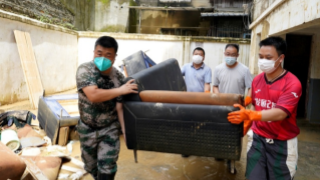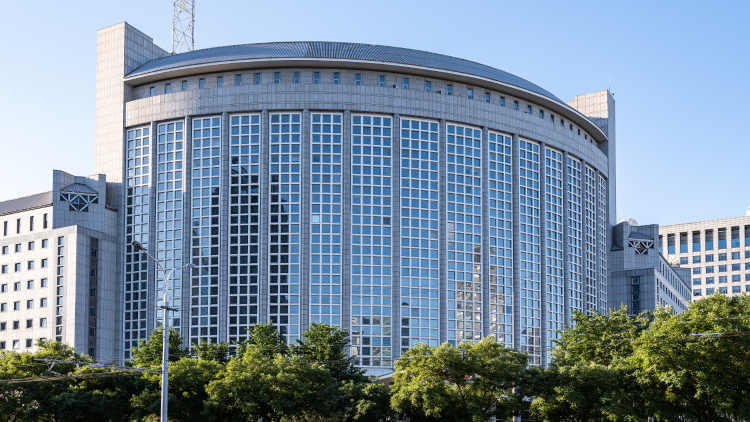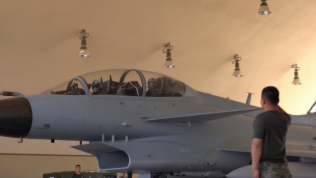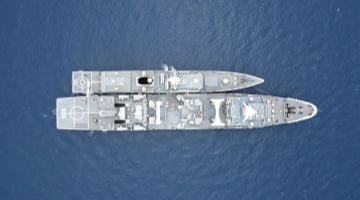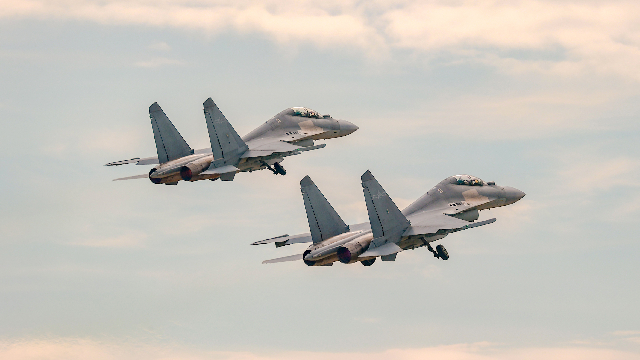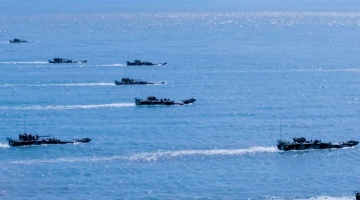By Li Zhe
The Cold-War-minded US is trying all means to promote its "Indo-Pacific strategy". In 2024, the US military has kept deploying weapon systems at its military bases in the Philippines under the disguise of a series of military drills like Balikatan 2024 and the Salaknib 2024, through which it tried to strengthen the military bond between the two countries. Analysts said the US colluding with the Philippines to create division and instigate confrontation has sent strong shock waves to the regional security landscape.
In recent years, the US believes its main rivals' mounting military strengths, especially the anti-access/area denial capability, are impairing its traditional military edge at an accelerated speed. In response, it put forth the "integrated deterrence" strategy and has stepped up military deployments in the Indo-Pacific region. In 2023, the Philippines opened up four more military bases to the US Army, and three of them participated in Balikatan 2024. What's more, two bases, respectively located in the Balabac Island close to the South China Sea and the Lal-lo airport on Luzon Island close to the Taiwan Strait, were prioritized in the drills to enhance Washington and Manila's fast response capability and coordination efficiency around the South China Sea and the Taiwan Strait in the attempt to form a united front against China.
For all their claims that the multiple drills this year are not targeted at any third party, it's as clear as broad daylight that the exercises are targeted at either in terms of the agenda or the scope.
Regarding the equipment involved, the two countries deployed the new-type land-based missile system Typhon in the north of Luzon island during the first phase of Salaknib 2024 and Balikatan 2024. Ever since the US backed out of the Intermediate-Range Nuclear Forces Treaty (INF Treaty) in 2019, it has been planning to deploy a land-based medium-range missile rim in the Indo-Pacific to create effective, regular deterrence to major regional countries. The latest dynamic deployment of Typhon in the Philippines in the name of the exercises was a tentative move in preparation for future official deployment.
Regarding the exercise subjects, the two countries carried out a range of highly targeted subjects in the South China Sea waters during Balikatan 2024, including simulated hostile actions, sinking simulated enemy ships, and counter-landing drills. They also exercised "retaking enemy-occupied islands" and "reinforcing the freedom of navigation", which are highly and clearly targeted.
Regarding the exercise area, the quadrilateral military drills in early April involving the US, the Philippines, Japan and Australia took place in South China Sea waters close to the northwest of Palawan Island in the Philippines, during which Manila organized a number of ships to sail to sea areas near the Houteng Jiao of Nansha Qundao. The subsequent Balikatan 2024 was much more provocative by expanding its scope to South China Sea waters beyond the 12 nautical miles for the first time.
Strengthening their military bond by way of the drills was not an "on the moment" decision, but the result of careful considerations on both sides – the US needing to refine its "Indo-Pacific strategy" while the Philippines aiming to take the opportunity expand its infringement actions.
The Philippines' special geographical location adjacent to the South China Sea and the Taiwan Strait makes it an important link of the US' "Indo-Pacific strategy". Now Washington is working to forge a minilateral security mechanism with Japan and the Philippines, while the latter two are negotiating the so-called Reciprocal Access Agreement to clear the way for Japanese military forces to participate in drills in the Philippines. Once the deal is inked, the US, with these two allies, will further enhance its layout along the so-called "first island chain" and stir up bloc confrontation in the Asia Pacific.
The Philippines, on the other hand, wishes to borrow the US' strengths to expand its rights by encroaching upon China's South China Sea. In March this year, the Philippine military announced a "comprehensive archipelagic defense concept" to expand its military responsibility beyond its territorial sea and reach into the so-called exclusive economic zone. During this year's Balikatan 2024, it for the first time introduced out-of-region military forces into the exclusive economic zone in the name of territorial defense with the intention of unilaterally realizing de facto expansion of rights. Ever since the current administration took office, Manila, in addition to opening up new military bases to the US, has also allowed it to deploy the medium-range missile system Typhon on its homeland. Such behaviors of setting a fox to keep the geese will not give it the security guarantee it wants. Rather, this will only place the whole region right under the US' gunpoint and expose it to immense risks of war.
The enhanced military alliance between the US and the Philippines driven by their respective pursuit for selfish gains is a stark incarnation of the Cold War mentality and bloc politics that will further break the regional strategic balance and create new tension and confrontation. In particular, their numerous provocations have seriously departed from ASEAN countries' fundamental principles and undermined the ASEAN-centered regional cooperation architecture, running against the regional countries' common wish for peace and development.
(The author is from the War Studies College of the Academy of Military Sciences of the Chinese PLA.)

